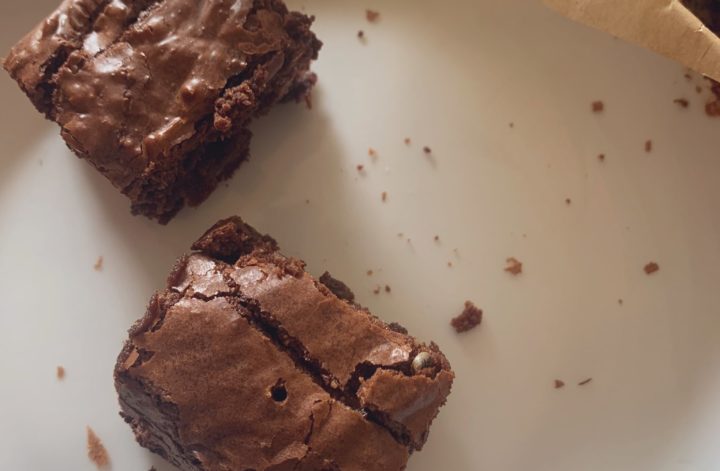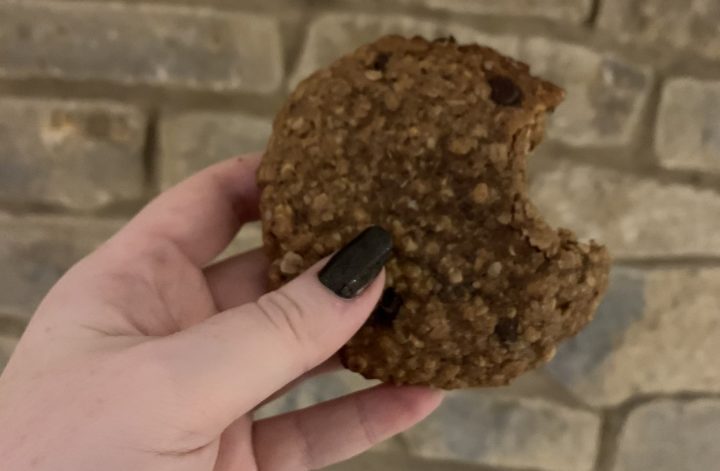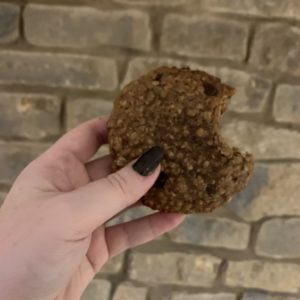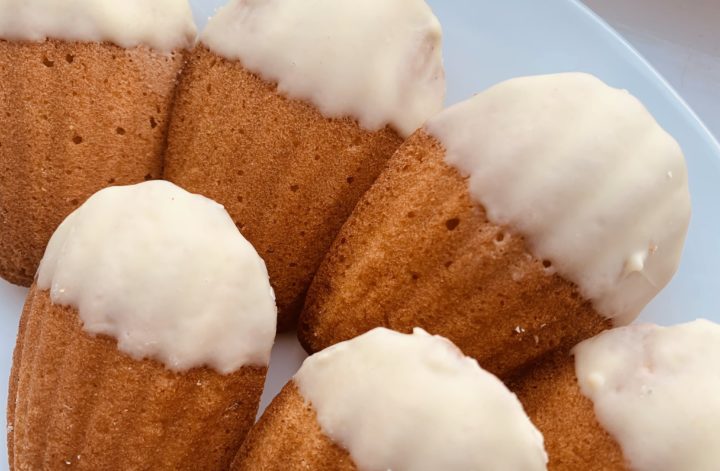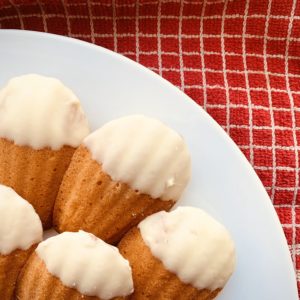Look, I know what it’s like when you go on a recipe website these days; you just want a recipe for brownies and you’re faced with a bunch of waffle first. I understand, it’s annoying. But 1) the search engines make us do it and 2) I devised this recipe for a reason, and I think it’s quite interesting! But, if you’re already thinking, “shut up, Elena, and give me that brownie recipe you promised, immediately!” there is a handy “jump to recipe” button above this paragraph.
If you’re even vaguely curious as to why I invented a brownie recipe, please do read on!
Recently I’ve been on a bit of a rollercoaster with my health. Long story short, my thyroid is borked. Never one to sit on my butt and just wait for things to happen on their own, I’ve been doing a bit of reading about how to boost thyroid health with nutrition. Unfortunately for me, a lot of my favourite foods are off the menu (broccoli! Potatoes! Brussels sprouts!) and a lot of things I’m not that fond of could do me a power of good. Namely, nuts and seeds.
I may be a fully-grown, taxpaying, child-rearing human being but when it comes to eating food I dislike I am basically a dog: I need to hide it in other food. When I was having fertility treatment I had to be quite careful what I ate (the drugs I was on can induce IBS-like symptoms if you’re not careful) so I was really specific about eating small, regular meals through the day and making sure the nutrition was well-balanced. I have PCOS and that can come with insulin-resistance, and balancing my blood sugar was, apparently, key to conceiving and sustaining a pregnancy. So, I started making overnight oats with added buckwheat, for fibre and quinoa, for protein. As an added protein, fibre, vitamin and mineral boost I also added a mix of milled nuts and seeds. For me, as a nut-and-seed hater, the flavour was barely perceptible and it meant I had a nutritionally-balanced breakfast to start the day with.
As the mum to a now eight-month-old baby, I am always on the lookout for snacks that I actually want to eat, are portable, room-temperature stable, batch-cooked and easy to eat with one hand. For a while 50% of my diet was lactation cookies, but now I wanted to come up with a thyroid-boosting snack that I could have when I was flagging and which might give my poor tired metabolism a little bit of help. Enter, the Secret Squirrel Brownie.
Now, I think it’s important to make a distinction here. While I am trying to take care of my physical health with food, I think it’s only fair that I mention I also have a history of eating disorders. I know how dangerous and unhelpful it is to brand foods and “good” or “clean” or in any way try to assign moral value to food. So, let me be clear. These brownies taste great. I have made them to encourage myself to eat ingredients which could be beneficial my own physical health, but they are also good for the soul. I not a nutritionist or dietician, I’m not even a chef. I’m just trying to make nice food and share it with people on the internet. At the risk of stating the obvious, a brownie is not going to heal your body, and this recipe is no substitute for the advice of an actual doctor. I have no proof that these do anything at all for your physical health, but I can vouch for their tastiness. I’m here to bake, not to sell snake oil.
Oh, and in case there is any doubt, these are not suitable for nut allergy sufferers. (Unless you swap the peanut butter for normal butter and swap out the ground nuts and seeds for 55g plain flour, in which case fill your boots!)
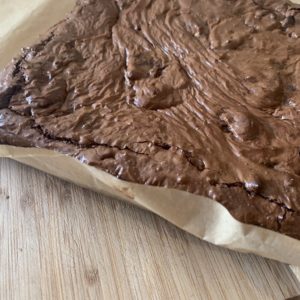
Elena’s Secret Squirrel Brownies
Equipment
- 24cm square baking tin
- Greaseproof paper
- Electric mixer
- Mixing bowls
- Moulinette or blender
Ingredients
- 60 g peanut butter I used smooth, you can use whatever you like. Almond butter would also work.
- 50 g unsalted butter You could use coconut oil if preferred.
- 245 g dark chocolate Around 70% cocoa is great, much higher will result in dry, bitter brownies.
- 65 g white chocolate
- 65 g milk chocolate
- 60 g plain flour To make these gluten-free you can swap this for 55g more ground almonds.
- 50 g finely-ground nuts and seeds I used a mix of linseed, flaxseed, pumpkin seed, sunflower seed, hemp seed, almonds, walnuts, hazelnuts, cashews and Brazil nuts, milled in a moulinette until relatively fine. Good old shop-bought ground almonds would be perfectly fine, though!
- 65 g cocoa powder
- 4 large eggs
- 360 g golden caster sugar
- 1 tsp vanilla paste Extract would be fine.
- 2 tbsp brewer's yeast (debittered) This can be omitted without affecting the recipe at all.
Instructions
- Preheat your oven to 180°c/160°c fan and line your baking tin with greaseproof paper.
- Measure out your peanut butter, unsalted butter and dark chocolate into a bowl and melt gently in a bain marie. Alternatively, you can melt it carefully using the microwave on low power in 40 second increments until the chocolate is melted. Mix until uniform in colour and texture, and put aside to cool slightly.
- Mix your eggs and sugar with your hand mixer, or use a stand mixer with the whisk attachment, on high. You want the mixture to roughly double in volume and be very pale and fluffy. This could take 3-8 minutes depending on your mixer's speed.
- Once the egg and sugar mix is voluminous enough, gently fold in the chocolate/butter/peanut butter, plus your vanilla paste or extract. Use figure-of-eight motions, taking care not to knock out too much air, until fairly well combined. Don't worry about making it completely uniform for now.
- Whisk your ground nuts and seeds, flour (if using), brewer's yeast and cocoa powder together in a bowl briskly until all lumps are gone and the ingredients are evenly dispersed. Add in your white and milk chocolate, chopped into chunks (I like a variety of sizes, just for texture.) Fold the dry ingredients into the wet mixture gently until no dry streaks remain.
- Pour your brownie batter into the lined baking tin, spreading evenly if necessary.
- Bake for 25-35 minutes, depending on how you like your brownies. Slightly longer will yield a more fudgy/chewy brownie, while less cooking time will give you more of a dessert-style gooey brownie. To check that your brownies are cooked, give your pan a little shake. If any of the batter is still wobbly it needs a little longer.
- As difficult as it may be, leave your brownies to cool completely before slicing. This will give you much tidier pieces. Make 6 slices in each direction to yield 36 squares. This is the serving size I'd technically recommend in one go but let your heart guide you. I'd be lying if I said I only ever had one at a time.
- Serve with tea or coffee, or with a scoop of ice cream if you're feeling decadent (as you should!)

